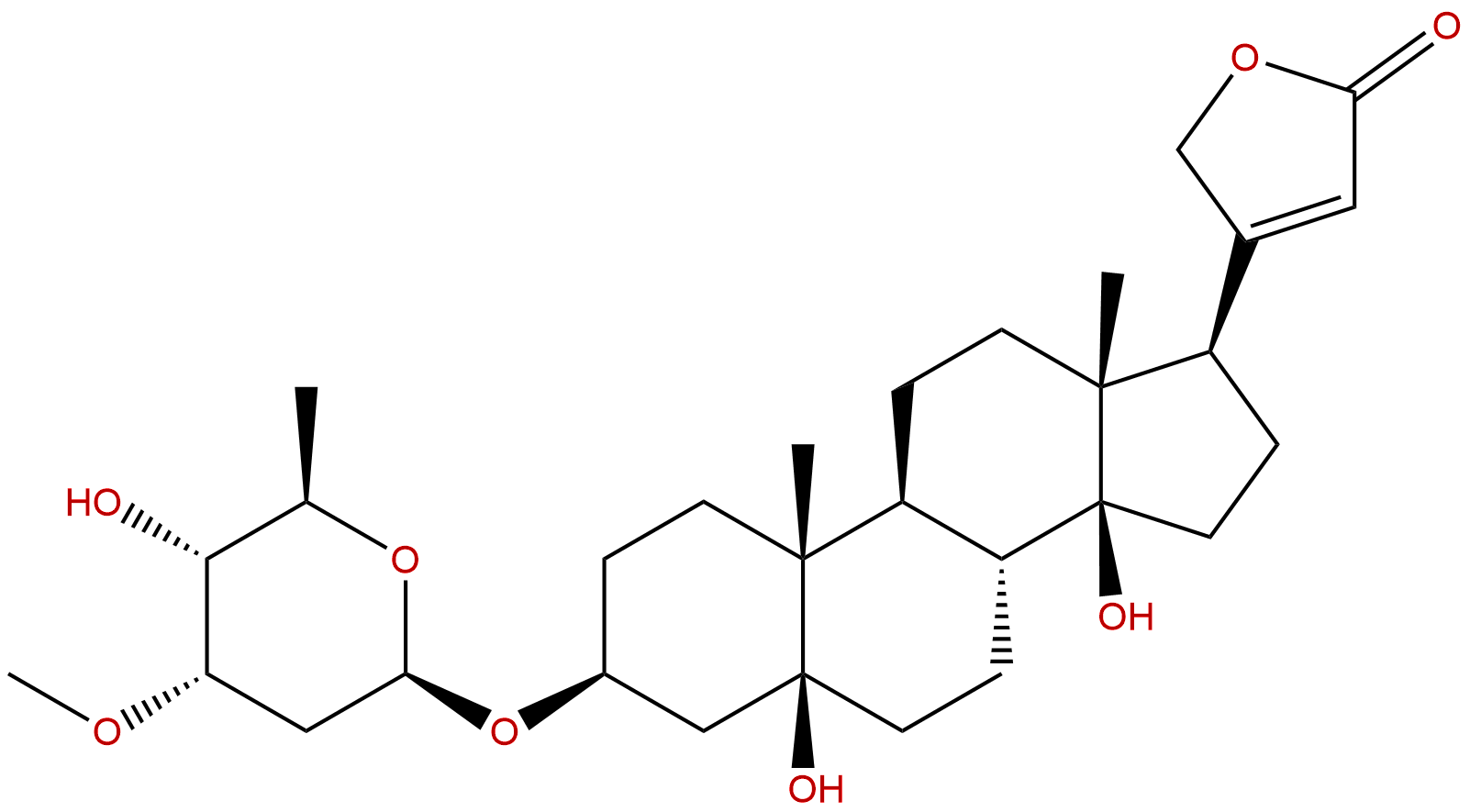
PeriplocymarinCAS No.:32476-67-8
|
||||||||||
 |
|
|
||||||||

| Catalogue No.: | BP3656 |
| Formula: | C30H46O8 |
| Mol Weight: | 534.69 |
Product name: Periplocymarin
Synonym name:
Catalogue No.: BP3656
Cas No.: 32476-67-8
Formula: C30H46O8
Mol Weight: 534.69
Botanical Source:
Physical Description:
Type of Compound: Steroids
Purity: 95%~99%
Analysis Method: HPLC-DAD or/and HPLC-ELSD
Identification Method: Mass, NMR
Packing: Brown vial or HDPE plastic bottle
The product could be supplied from milligrams to grams. Inquire for bulk scale.
We provide solution to improve the water-solubility of compounds, thereby facilitating the variety of activity tests and clinic uses.
For Reference Standard and R&D, Not for Human Use Directly.
Description:
Periplocymarin, a cardiac glycoside, has potential anti-cancer activity. Octreotide-conjugated periplocymarin demonstrates tumor selectivity and may be useful as a targeting agent to improve the safety profile of cardiac glycosides for cancer therapy.
References:
Oncotarget. 2016 Dec 27;7(52):86326-86338.Octreotide-periplocymarin conjugate prodrug for improving targetability and anti-tumor efficiency: synthesis, in vitro and in vivo evaluation.
Cardiac glycosides could increase intracellular Ca2+ ion by inhibiting the Na+/K+ATPase to induce apoptosis in many tumor cells. However, narrow therapeutic index, poor tumor selectivity and severe cardiovascular toxicity hinder their applications in cancer treatment. To improve the safety profile and tumor targetablility of cardiac glycosides, we designed octreotide conjugated Periplocymarin, a cardiac glycoside isolated from Cortex periplocae.
METHODS AND RESULTS:
The conjugate showed higher cytotoxicity on MCF-7 cells and HepG2 tumor cells (SSTRs overexpression) but much less toxicity in L-02 normal cells. Tissue distribution studies of the conjugate using H22 tumor model in mice showed higher accumulation in tumor and lower distribution in heart and liver than Periplocymarin. Furthermore, in vivo anticancer effects of the conjugate on mice bearing H22 cancer xenografts confirmed enhanced anti-tumor efficacy and decreased systemic toxicity.
CONCLUSIONS:
Altogether, octreotide-conjugated Periplocymarin demonstrated tumor selectivity and may be useful as a targeting agent to improve the safety profile of cardiac glycosides for cancer therapy.